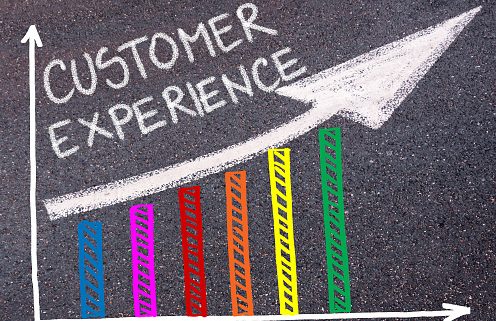How Do Customer Experience Improvements Impact Revenue?
This post was authored by Matthew Draper and originally appeared here on Liferay.com
———————————–
Without seeing detailed statistics concerning the impact of online customer experience (CX) on their company’s bottom line, many executives ask why it matters for their revenue goals. However, the online customer experience-revenue relationship has become clearer and clearer in recent years. Crucially, those who are still in the dark about the revenue benefits of customer experience improvement may be missing out on optimizing their company’s performance.
While common sense may dictate that there is indeed such a thing as CX-revenue relationship, better understanding this idea can help you make informed, impactful decisions about your company’s online presence. Recently, Mercury Insurance used Liferay to overhaul and consolidate their insurance customer portal. As a result, Mercury Insurance found that customer experience greatly improved, leading to higher ratings, reduced costs and many more positive effects. It’s just one example of improved customer engagement leading to measurable company benefits.
How Does Customer Experience Affect Revenue?
According to Forrester Research, good CX can lead to client retention, enrichment and advocacy, which all have loyalty-driven revenue potential. While there are many reasons why a client may terminate his or her services with a company, all businesses should prevent poor digital customer experience from being a cause.
But how will improving CX improve a business’ revenue?
While hard numbers on customer experience-revenue relationships can be difficult to come by, research done by Harvard Business Review shows there is a direct link between CX and annual revenue increase. Their survey polled customers about their experiences with both transaction-based and subscription-based companies. For transaction companies, clients who had the best experiences were shown to spend 140% more than those who were shown to have the poorest experience. For companies based around subscription services, it was shown that members who rated their experience at the lowest score possible only had a 43% chance of still being a member one year later. In contrast, those who scored their experiences at the highest ratings had a 74% chance of still being a member in a year.
In either case, it is clear that positive customer engagement meant a greater likelihood of higher revenue and happier clients who could advocate your brand to other potential clients.
However, not every customer experience manager takes long-term relationships into account when determining profits. But the widespread effects of happy clients should be part of every CX decision. If you are a CX leader attempting to make improvements in your company’s customer engagement, it is crucial that you tailor your investments to your brand’s unique needs, consider non-revenue benefits like happy customers becoming advocates and think about both complete CX overhauls as well as targeting the worst experiences reported by your clients.
Three Types of CX-Revenue Improvement Strategies
As detailed by Forrester, there are generally three types of online customer experience-revenue relationships. These show how a company should focus its initial CX improvement initiatives in order to see the greatest effects on your company’s revenue.
Broad Improvements to Customer Experience – In this strategy, efforts to improve CX can be applied across the board and in all types of interactions that customers have with your organization. Any individual aspect of customer experience improvement should result in improved revenue, but broad improvements may have the most noticeable results, as they will impact the largest amount of customers. This strategy relates to a linear customer experience-revenue relationship, which often affects companies like internet service providers, big-box retailers and auto insurance providers.
Focused Improvements on the Worst Customer Experiences – You may find that the greatest gains can be found in primarily addressing the worst experiences. Focus your time and energy on improving the worst customer experiences, which can likely be distinguished through customer surveys, feedback and records of complaints that your customer service team has received. By doing so, you can prevent customers from dropping your service and are likely to find the largest return on investment in your customer experience improvement efforts. This strategy relates to a relationship of diminishing returns between customer experience improvement and revenue, which is often felt by credit card providers, wireless service providers and airlines.
Focused Improvements on the Most Positive Customer Experiences – Further improving the highest levels of CX could result in the most dramatic revenue increases, while improving the poorest experiences will do less for your bottom line. Keep your customer experience improvement efforts focused on the most positive experiences seen by your business, which can likely be determined through positive feedback received in surveys. In doing so, customers who have a positive experience with your business will be encouraged to return time and time again, as well as become an advocate who can bring in additional customers. This strategy relates to an exponential CX-revenue relationship that often affects credit card providers, wireless service providers and airlines.
While these three types of revenue-impacting digital customer experience strategies should be individually tailored by each company that adopts them, they can be a helpful guide to what your business should first address. By focusing your efforts while improving CX, you can create a successful plan for optimizing customer portals and other forms of engagement.
So what is keeping some businesses from improving customer experience?
Many see improving CX as not being worth the cost. However, improvements have been shown to actually reduce costs due to needing to handle fewer complaints, as shown by information provided by Medallia. That means less money spent on fielding upset clients, happier employees who don’t have to spend all day handling complaints and more time available for optimizing internal processes and other forms of customer engagement.
These factors are vital in determining the long-term goals of a company and weighing the true value of online customer experience and what can be done to improve it.



